Huici Wu
Multipath Component-Aided Signal Processing for Integrated Sensing and Communication Systems
Dec 31, 2024Abstract:Integrated sensing and communication (ISAC) has emerged as a pivotal enabling technology for sixth-generation (6G) mobile communication system. The ISAC research in dense urban areas has been plaguing by severe multipath interference, propelling the thorough research of ISAC multipath interference elimination. However, transforming the multipath component (MPC) from enemy into friend is a viable and mutually beneficial option. In this paper, we preliminarily explore the MPC-aided ISAC signal processing and apply a space-time code to improve the ISAC performance. Specifically, we propose a symbol-level fusion for MPC-aided localization (SFMC) scheme to achieve robust and high-accuracy localization, and apply a Khatri-Rao space-time (KRST) code to improve the communication and sensing performance in rich multipath environment. Simulation results demonstrate that the proposed SFMC scheme has more robust localization performance with higher accuracy, compared with the existing state-of-the-art schemes. The proposed SFMC would benefit highly reliable communication and sub-meter level localization in rich multipath scenarios.
Interference Management in MIMO-ISAC Systems: A Transceiver Design Approach
Jul 07, 2024
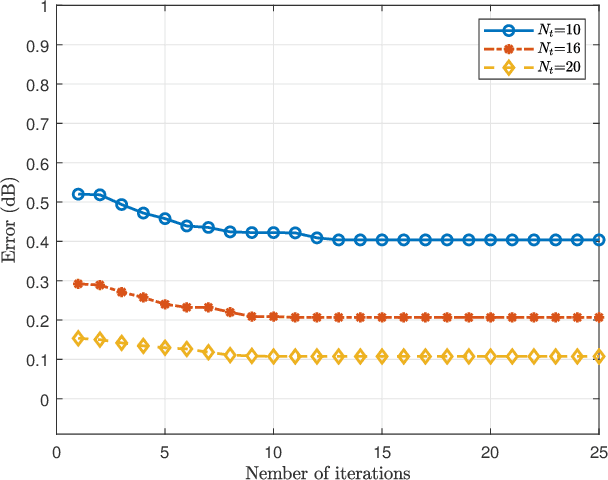
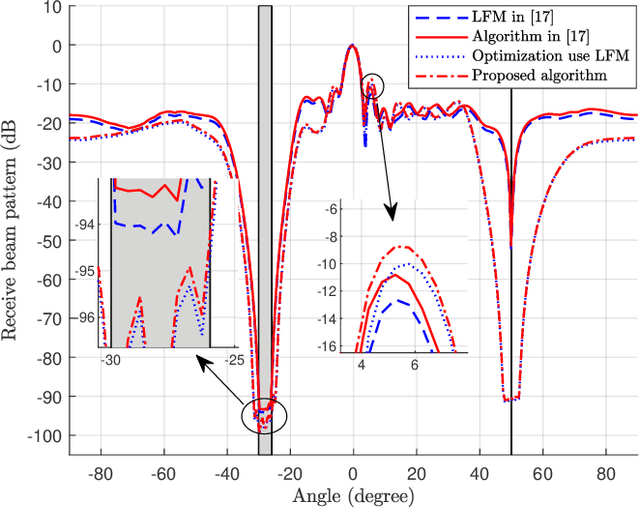
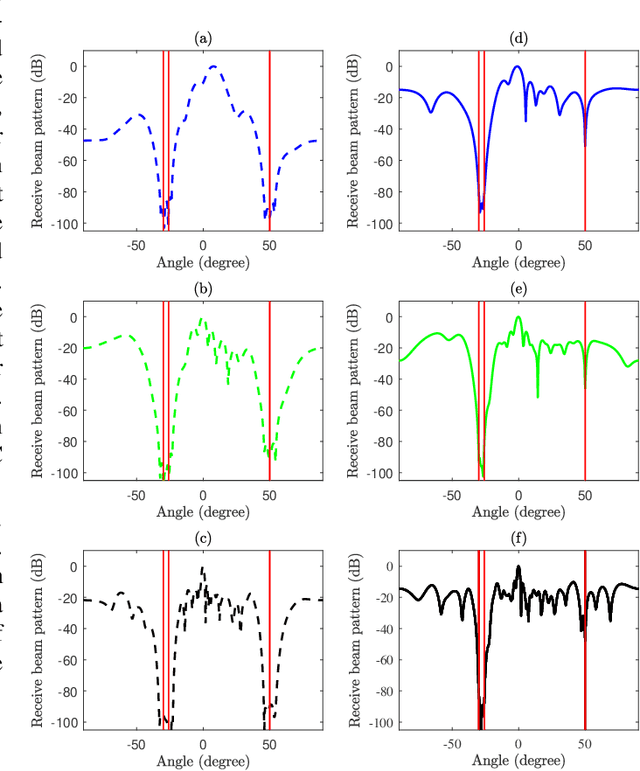
Abstract:The integrated sensing and communication (ISAC) system under multi-input multi-output (MIMO) architecture achieves dual functionalities of sensing and communication on the same platform by utilizing spatial gain, which provides a feasible paradigm facing spectrum congestion. However, the dual functionalities of sensing and communication operating simultaneously in the same platform bring severe interference in the ISAC systems. Facing this challenge, we propose a joint optimization framework for transmit beamforming and receive filter design for ISAC systems with MIMO architecture. We aim to maximize the signal-to-clutter-plus-noise ratio (SCNR) at the receiver while considering various constraints such as waveform similarity, power budget, and communication performance requirements to ensure the integration of the dual functionalities. In particular, the overall transmit beamforming is refined into sensing beamforming and communication beamforming, and a quadratic transformation (QT) is introduced to relax and convert the complex non-convex optimization objective. An efficient algorithm based on covariance matrix tapers (CMT) is proposed to restructure the clutter covariance matrix considering the mismatched steering vector, thereby improving the robustness of the ISAC transceiver design. Numerical simulations are provided to demonstrate the effectiveness of the proposed algorithm.
Carrier Aggregation Enabled MIMO-OFDM Integrated Sensing and Communication
May 17, 2024



Abstract:In the evolution towards the forthcoming era of sixth-generation (6G) mobile communication systems characterized by ubiquitous intelligence, integrated sensing and communication (ISAC) is in a phase of burgeoning development. However, the capabilities of communication and sensing within single frequency band fall short of meeting the escalating demands. To this end, this paper introduces a carrier aggregation (CA)- enabled multi-input multi-output orthogonal frequency division multiplexing (MIMO-OFDM) ISAC system fusing the sensing data on high and low-frequency bands by symbol-level fusion for ultimate communication experience and high-accuracy sensing. The challenges in sensing signal processing introduced by CA include the initial phase misalignment of the echo signals on high and low-frequency bands due to attenuation and radar cross section, and the fusion of the sensing data on high and lowfrequency bands with different physical-layer parameters. To this end, the sensing signal processing is decomposed into two stages. In the first stage, the problem of initial phase misalignment of the echo signals on high and low-frequency bands is solved by the angle compensation, space-domain diversity and vector crosscorrelation operations. In the second stage, this paper realizes symbol-level fusion of the sensing data on high and low-frequency bands through sensing vector rearrangement and cyclic prefix adjustment operations, thereby obtaining high-precision sensing performance. Then, the closed-form communication mutual information (MI) and sensing Cramer-Rao lower bound (CRLB) for the proposed ISAC system are derived to explore the theoretical performance bound with CA. Simulation results validate the feasibility and superiority of the proposed ISAC system.
Target Localization with Macro and Micro Base Stations Cooperative Sensing
May 05, 2024Abstract:Addressing the communication and sensing demands of sixth-generation (6G) mobile communication system, integrated sensing and communication (ISAC) has garnered traction in academia and industry. With the sensing limitation of single base station (BS), multi-BS cooperative sensing is regarded as a promising solution. The coexistence and overlapped coverage of macro BS (MBS) and micro BS (MiBS) are common in the development of 6G, making the cooperative sensing between MBS and MiBS feasible. Since MBS and MiBS work in low and high frequency bands, respectively, the challenges of MBS and MiBS cooperative sensing lie in the fusion method of the sensing information in high and low-frequency bands. To this end, this paper introduces a symbol-level fusion method and a grid-based three-dimensional discrete Fourier transform (3D-GDFT) algorithm to achieve precise localization of multiple targets with limited resources. Simulation results demonstrate that the proposed MBS and MiBS cooperative sensing scheme outperforms traditional single BS (MBS/MiBS) sensing scheme, showcasing superior sensing performance
Deep Learning Based Multi-Node ISAC 4D Environmental Reconstruction with Uplink- Downlink Cooperation
Apr 23, 2024
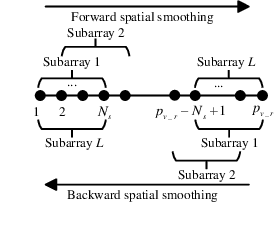
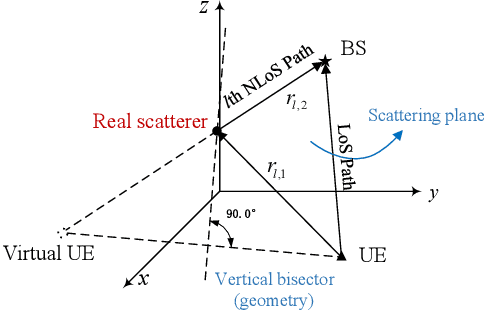
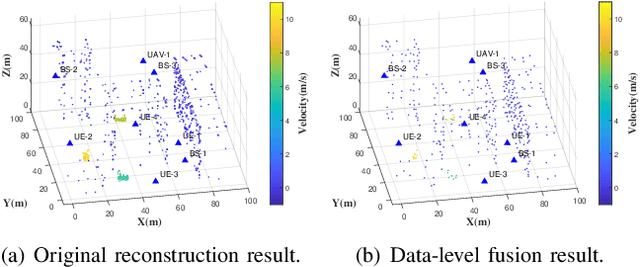
Abstract:Utilizing widely distributed communication nodes to achieve environmental reconstruction is one of the significant scenarios for Integrated Sensing and Communication (ISAC) and a crucial technology for 6G. To achieve this crucial functionality, we propose a deep learning based multi-node ISAC 4D environment reconstruction method with Uplink-Downlink (UL-DL) cooperation, which employs virtual aperture technology, Constant False Alarm Rate (CFAR) detection, and Mutiple Signal Classification (MUSIC) algorithm to maximize the sensing capabilities of single sensing nodes. Simultaneously, it introduces a cooperative environmental reconstruction scheme involving multi-node cooperation and Uplink-Downlink (UL-DL) cooperation to overcome the limitations of single-node sensing caused by occlusion and limited viewpoints. Furthermore, the deep learning models Attention Gate Gridding Residual Neural Network (AGGRNN) and Multi-View Sensing Fusion Network (MVSFNet) to enhance the density of sparsely reconstructed point clouds are proposed, aiming to restore as many original environmental details as possible while preserving the spatial structure of the point cloud. Additionally, we propose a multi-level fusion strategy incorporating both data-level and feature-level fusion to fully leverage the advantages of multi-node cooperation. Experimental results demonstrate that the environmental reconstruction performance of this method significantly outperforms other comparative method, enabling high-precision environmental reconstruction using ISAC system.
Deep Cooperation in ISAC System: Resource, Node and Infrastructure Perspectives
Mar 05, 2024Abstract:With the mobile communication system evolving into 6th-generation (6G), the Internet of Everything (IoE) is becoming reality, which connects human, big data and intelligent machines to support the intelligent decision making, reconfiguring the traditional industries and human life. The applications of IoE require not only pure communication capability, but also high-accuracy and large-scale sensing capability. With the emerging integrated sensing and communication (ISAC) technique, exploiting the mobile communication system with multi-domain resources, multiple network elements, and large-scale infrastructures to realize cooperative sensing is a crucial approach to satisfy the requirements of high-accuracy and large-scale sensing in IoE. In this article, the deep cooperation in ISAC system including three perspectives is investigated. In the microscopic perspective, namely, within a single node, the cooperation at the resource-level is performed to improve sensing accuracy by fusing the sensing information carried in the time-frequency-space-code multi-domain resources. In the mesoscopic perspective, the sensing accuracy could be improved through the cooperation of multiple nodes including Base Station (BS), User Equipment (UE), and Reconfigurable Intelligence Surface (RIS), etc. In the macroscopic perspective, the massive number of infrastructures from the same operator or different operators could perform cooperative sensing to extend the sensing coverage and improve the sensing continuity. This article may provide a deep and comprehensive view on the cooperative sensing in ISAC system to enhance the performance of sensing, supporting the applications of IoE.
Integrated Sensing and Communication Driven Digital Twin for Intelligent Machine Network
Feb 08, 2024



Abstract:Intelligent machines (IMs), including industrial machines, unmanned aerial vehicles (UAVs), and unmanned vehicles, etc., could perform effective cooperation in complex environment when they form IM network. The efficient environment sensing and communication are crucial for IM network, enabling the real-time and stable control of IMs. With the emergence of integrated sensing and communication (ISAC) technology, IM network is empowered with ubiquitous sensing capabilities, which is helpful in improving the efficiency of communication and sensing with the mutual benefit of them. However, the massive amount of sensing information brings challenges for the processing, storage and application of sensing information. In this article, ISAC driven digital twin (DT) is proposed for IM network, and the architecture and enabling technologies are revealed. ISAC driven DT structurally stores the sensing information, which is further applied to optimize communication, networking and control schemes of IMs, promoting the widespread applications of IMs.
Spectrum Sharing between UAV-based Wireless Mesh Networks and Ground Networks
Nov 25, 2023Abstract:The unmanned aerial vehicle (UAV)-based wireless mesh networks can economically provide wireless services for the areas with disasters. However, the capacity of air-to-air communications is limited due to the multi-hop transmissions. In this paper, the spectrum sharing between UAV-based wireless mesh networks and ground networks is studied to improve the capacity of the UAV networks. Considering the distribution of UAVs as a three-dimensional (3D) homogeneous Poisson point process (PPP) within a vertical range, the stochastic geometry is applied to analyze the impact of the height of UAVs, the transmit power of UAVs, the density of UAVs and the vertical range, etc., on the coverage probability of ground network user and UAV network user, respectively. The optimal height of UAVs is numerically achieved in maximizing the capacity of UAV networks with the constraint of the coverage probability of ground network user. This paper provides a basic guideline for the deployment of UAV-based wireless mesh networks.
Capacity and Delay of Unmanned Aerial Vehicle Networks with Mobility
Nov 25, 2023Abstract:Unmanned aerial vehicles (UAVs) are widely exploited in environment monitoring, search-and-rescue, etc. However, the mobility and short flight duration of UAVs bring challenges for UAV networking. In this paper, we study the UAV networks with n UAVs acting as aerial sensors. UAVs generally have short flight duration and need to frequently get energy replenishment from the control station. Hence the returning UAVs bring the data of the UAVs along the returning paths to the control station with a store-carry-and-forward (SCF) mode. A critical range for the distance between the UAV and the control station is discovered. Within the critical range, the per-node capacity of the SCF mode is O(n/log n) times higher than that of the multi-hop mode. However, the per-node capacity of the SCF mode outside the critical range decreases with the distance between the UAV and the control station. To eliminate the critical range, a mobility control scheme is proposed such that the capacity scaling laws of the SCF mode are the same for all UAVs, which improves the capacity performance of UAV networks. Moreover, the delay of the SCF mode is derived. The impact of the size of the entire region, the velocity of UAVs, the number of UAVs and the flight duration of UAVs on the delay of SCF mode is analyzed. This paper reveals that the mobility and short flight duration of UAVs have beneficial effects on the performance of UAV networks, which may motivate the study of SCF schemes for UAV networks.
Integrated Sensing and Communication enabled Multiple Base Stations Cooperative Sensing Towards 6G
Oct 11, 2023Abstract:Driven by the intelligent applications of sixth-generation (6G) mobile communication systems such as smart city and autonomous driving, which connect the physical and cyber space, the integrated sensing and communication (ISAC) brings a revolutionary change to the base stations (BSs) of 6G by integrating radar sensing and communication in the same hardware and wireless resource. However, with the requirements of long-range and accurate sensing in the applications of smart city and autonomous driving, the ISAC enabled single BS still has a limitation in the sensing range and accuracy. With the networked infrastructures of mobile communication systems, multi-BS cooperative sensing is a natural choice satisfying the requirement of long-range and accurate sensing. In this article, the framework of multi-BS cooperative sensing is proposed, breaking through the limitation of single-BS sensing. The enabling technologies, including unified ISAC performance metrics, ISAC signal design and optimization, interference management, cooperative sensing algorithms, are introduced in details. The performance evaluation results are provided to verify the effectiveness of multi-BS cooperative sensing schemes. With ISAC enabled multi-BS cooperative sensing (ISAC-MCS), the intelligent infrastructures connecting physical and cyber space can be established, ushering the era of 6G promoting the intelligence of everything.
* 11 pages 6 figures
 Add to Chrome
Add to Chrome Add to Firefox
Add to Firefox Add to Edge
Add to Edge